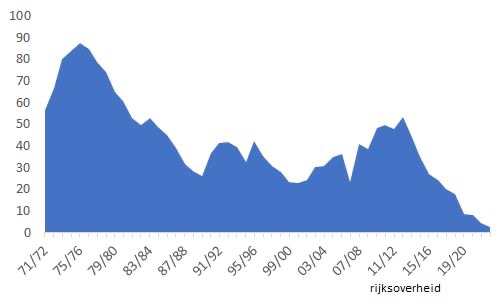

In recent weeks, the eyes of the gas world have been on the Nord Stream issue. Prompt contracts at key European gas hubs surged by around 80pc since mid-June, due to a more than twofold decline of flows along the route.
And such a reaction can hardly be called overemotional, given shippers’ need to fill their storage sites across the region in the run up to another winter season.
Fundamentally, it is the slowdown in the rate of injections into the NWE underground facilities that is a major consequence of lower Nord Stream gas supplies.
The average daily net injection rate declined to 0.39 percentage point during the period from 16 June to 2 July, compared with 0.42 percentage point registered in the first half of last month, according to AGSI data.
If you look at Germany’s gas storage facilities, which are particularly exposed to any significant fluctuations in Russian gas flows, the difference between the two figures becomes more apparent.
While the fullness level of the country’s UGSs grew by about 0.59pc per day between 1 and 12 June, this rate has averaged 0.33pc per day since 13 June.
In all fairness it has to be noted that an increase in demand for cooling appliances as well as reduced wind power generation in Germany also contributed to players having less gas to inject into the storages.
A kind of cautious optimism that prevailed in the European gas market as recently as in May amid record-high injection rates has been replaced by growing scepticism about the progress towards a 80pc storage target. At least for now.
Source: Yakov Grabar (LinkedIn)













